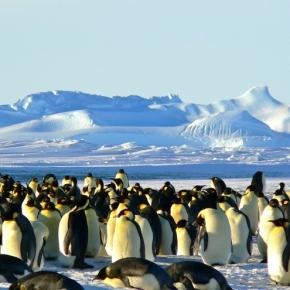
Antarctica is getting renewed focus for having ‘record’ summer sea ice loss, beating the old one by 0.1 percent.
And predictably, the head of NSIDC (U.S. National Snow and Ice Data Center), Mark Serreze, used the 0.1 percent change and asserted less summer sea ice is Antarctica’s reaction to a warming world, despite having grown in size by 33 percent since 1978 and covered almost entirely by snow. And Serreze said this record-breaking sea ice loss was making it “harder to deny” the “impact of #Climate Change on planet Earth.”
Antarctic Sea Ice Claims Don’t Stand Up To Scrutiny https://weatheraction.wordpress.com/2017/02/23/antarctic-sea-ice-claims-dont-stand-up-to-scrutiny …
Antarctic Sea Ice Claims Don’t Stand Up To Scrutiny
Reblogged on WordPress.com
weatheraction.wordpress.com
So, what’s happening in Antarctica? According to Paul Homewood, the simple answer was weather. Changing wind patterns, Homewood wrote on his site, caused by the Southern Annular Mode flipping negative allowed winds to penetrate from the north. That elevated temperatures while “pushing sea ice towards the coast.” Another issue was the accuracy of the satellites, also called the margin of error.
Natural geological heat flow causing West Antarctic glacial ice melting—not global warming http://climatechangedispatch.com/natural-geological-heat-flow-causing-west-antarctic-glacial-ice-melting-not-global-warming/ …
Natural geological heat flow causing West Antarctic glacial ice melting—not global warming |…
Contrary to alarmist media reports claiming global warming is causing West Antarctica’s glaciers to collapse into the ocean, recent fracturing and break-up of these glaciers is actually a natural…
climatechangedispatch.com
Pine Island Glacier
Another area of ‘concern’ was the Pine Island Glacier, which broke off a chunk recently. In earlier reports, researchers said continental winds were pushing warm sea water beneath West Antarctica’s Pine Island Glacier, causing it to calve. Now they’re blaming the local weather conditions. What atmospherically biased scientists have refused to acknowledge is that Pine Island Glacier sits atop an active 5,000-mile-long heat-emitting fault.









